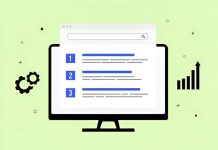Ever heard of a 2nd lien? It sounds a bit complicated, right? Well, it’s actually a pretty common thing in the world of loans and property. Basically, it’s a type of debt that comes into play after another loan is already set up. Think of it like a second layer of borrowing. We’re going to break down what a 2nd lien is, how it works, and what you should keep in mind if you’re thinking about getting one or dealing with one.
Key Takeaways
- A 2nd lien is a loan that takes a backseat to another existing loan if things go wrong, like a bankruptcy.
- Even though it’s “second,” many 2nd liens are still considered pretty serious debt, just not as serious as the first one.
- If a borrower can’t pay up, the first lender gets their money back before the 2nd lien holder sees a dime.
- Borrowers might use a 2nd lien to get cash from their property or to help their business, but there are risks involved.
- Lenders and investors take on more risk with 2nd liens, which often means higher interest rates and tougher approval rules for these kinds of loans.
Defining a 2nd Lien
What Constitutes Second-Lien Debt?
Second-lien debt is a type of borrowing that comes into play after a primary, or first, lien has already been established on an asset. This means that in the event of a borrower’s default or liquidation, the holder of the second lien is repaid only after the first lienholder has been fully satisfied. Think of it like a queue: the first lienholder is at the front, and the second lienholder is next in line. This position in the repayment hierarchy makes second-lien debt distinct from other forms of financing.
Understanding Lien Priority
Lien priority determines the order in which creditors are paid from the proceeds of a collateralized asset if a borrower defaults. A lien is a legal claim placed on an asset, like a house or a car, by a creditor to secure a loan. When multiple liens exist on the same asset, their priority is typically determined by the order in which they were recorded. The first lien recorded usually holds the highest priority, meaning it gets paid first. Subsequent liens, such as a second lien, have a lower priority. This hierarchy is critical for lenders, as it directly impacts their potential for recovery in a default scenario.
- First-lien holders have the primary claim on the collateral.
- Second-lien holders have a subordinate claim, paid only after the first lien is settled.
- The order of recording often dictates the priority of liens.
The concept of lien priority is fundamental to understanding the risk profile of different debt instruments. It explains why a first mortgage lender faces less risk than a second mortgage lender on the same property, as the first lender has a guaranteed position at the front of the repayment line.
Distinction from Junior Debt
While second-lien debt is often referred to as junior debt due to its subordinate position, there are nuances. Junior debt is a broader category that includes any debt that is subordinate to senior debt. Second-lien debt specifically refers to debt secured by a second position on collateral. Other forms of junior debt might be unsecured, meaning they have no specific collateral backing them, or they might be secured by different, less valuable assets. The key difference lies in the collateralization and its specific ranking. For instance, a company might issue unsecured junior bonds, which are subordinate to all secured debt, including both first and second liens. Understanding lien priority is important for both lenders and borrowers. When considering different debt options, it’s helpful to compare their characteristics:
| Debt Type | Collateral Position | Repayment Priority |
|---|---|---|
| First-Lien Debt | Primary | Highest (paid first from collateral proceeds) |
| Second-Lien Debt | Secondary | Lower than first-lien, higher than unsecured debt |
| Unsecured Junior Debt | None | Lowest (paid after all secured and senior unsecured debt) |
When evaluating investment opportunities, especially in distressed situations, understanding the specific type of debt and its position in the capital structure is vital. For example, an investor might consider structured settlements and lump sum payments in a legal context, which also involves different repayment structures.
Operational Mechanics of a 2nd Lien
How Second-Lien Debts Function
Second-lien debts operate by allowing a borrower to secure additional financing using an asset that already has a primary lien against it. This type of debt is subordinate to the first lien, meaning its claim on the collateral is secondary. When a borrower takes out a second lien, they are essentially leveraging the remaining equity in an asset after the first lien’s value is accounted for. For example, if a property is worth $500,000 and has a first mortgage of $300,000, the borrower might be able to obtain a second lien against the remaining $200,000 in equity. The terms, such as interest rates and repayment schedules, are negotiated separately from the first lien and often reflect the increased risk for the second-lien lender.
The Role of Collateral in 2nd Liens
Collateral is a big deal for second liens. It’s what the lender can take if you don’t pay back the loan. Since a first lien already has a claim on the asset, the second-lien holder’s claim is weaker. This means if things go south, the first lender gets paid first from the sale of the collateral. Only after the first lender is fully satisfied does the second lender get a shot at the remaining funds. This hierarchy makes second liens riskier for lenders, which often translates to higher interest rates for borrowers. The type and value of the collateral are carefully assessed to determine the potential recovery for the second-lien holder.
The value of the collateral is a critical factor in determining the feasibility and terms of a second-lien agreement. Lenders meticulously evaluate the asset’s market value and the outstanding balance of the first lien to calculate the available equity, which serves as the basis for the second-lien amount. This careful assessment helps mitigate some of the inherent risks associated with junior debt positions.
Repayment Order in Default Scenarios
Understanding the repayment order is key, especially if a borrower defaults. Here’s how it generally works:
- First-Lien Holder: This lender has the primary claim on the collateral. In a default scenario, proceeds from the sale of the asset are first used to fully satisfy the outstanding balance of the first lien, including principal, interest, and any associated fees.
- Second-Lien Holder: After the first-lien holder has been paid in full, any remaining proceeds from the collateral’s sale are then allocated to the second-lien holder. It’s possible that there won’t be enough money left to cover the entire second lien, leaving the second-lien holder with a loss.
- Unsecured Creditors: If there are any funds left after both the first and second liens are satisfied, these funds would then go to unsecured creditors, such as credit card companies or personal loan providers. However, in many default situations involving second liens, there are often no funds remaining for unsecured creditors.
This structured repayment order highlights the increased risk for second-lien lenders, as their ability to recover funds is entirely dependent on the remaining equity after the primary debt is settled. For borrowers, understanding this order is important for managing financial obligations and assessing potential outcomes in challenging situations. For those looking to understand their financial standing, checking credit score requirements can be a good first step. Similarly, exploring different financial avenues, such as those offered by investment banking, can provide alternative solutions for capital needs.
Key Considerations for 2nd Liens
Elevated Risk for Lenders and Investors
Second liens come with a higher degree of risk for those providing the funds. This is because, in a default situation, the first lienholder gets paid back before anyone else. If there isn’t enough money left after the first lien is satisfied, the second lienholder might not get all their money back, or even any of it. This subordinated position makes second liens inherently riskier than primary loans.
The potential for reduced recovery in a liquidation scenario means lenders and investors need to carefully assess the borrower’s financial stability and the value of the collateral.
Impact on Borrowing Rates
Because of the increased risk, second-lien loans typically come with higher interest rates compared to first liens. Lenders need to be compensated for taking on that extra risk. The exact rate depends on a few things:
- The borrower’s credit score and financial history.
- The value and type of collateral being used.
- Current market conditions and interest rate trends.
Stringent Approval Processes
Getting approved for a second lien often involves a more thorough review process than a first lien. Lenders want to be extra sure about the borrower’s ability to repay, given the higher risk involved. This might mean:
- More detailed financial documentation is required.
- A deeper analysis of the collateral’s value and marketability.
- Stricter debt-to-income ratio requirements.
- A comprehensive review of existing debt obligations.
For businesses, this could also involve a detailed look at their construction asset finance strategies. For individuals, understanding the implications of a second lien is important, especially when considering options like tax loans that might impact overall financial health.
Risks Associated with 2nd Liens

Second liens come with various risks that affect everyone involved: the borrower, the lender, and the investor. It’s important to understand these potential downsides before getting into such an agreement.
Risks for Borrowers
Borrowers take on significant risk when securing a second lien. Pledging assets as collateral means those assets are on the line if payments aren’t made. If you default on a second lien, the lender can start procedures to force the sale of the pledged asset. For homeowners, this could mean foreclosure if a second mortgage goes into default. Foreclosure is a legal process where the lender takes control of the property and sells it to recover their money. Businesses also face this risk; they might lose assets like real estate, equipment, or even accounts receivable if a second-lien lender forecloses.
- Loss of pledged assets (e.g., home, business equipment)
- Potential for foreclosure proceedings
- Damage to credit score
- Increased financial strain due to higher interest rates
Risks for Lenders
Lenders in second-lien positions face a higher degree of risk compared to first-lien holders. Their primary concern is often insufficient collateral if a borrower defaults or declares bankruptcy. This is because first-lien holders get paid first from the sale of any collateral. If the sale proceeds aren’t enough to cover both liens, the second-lien holder might not recover their full investment, or any of it. Lenders typically assess a borrower’s financial health, looking at things like credit scores, earnings, and cash flow, but even with careful checks, the risk remains. For example, in a property development loan, if the project fails, the second-lien lender is in a precarious position. Property development loans carry their own set of risks, and adding a second lien amplifies the exposure for lenders.
Second-lien lenders are always behind first-lien holders in the repayment queue. This means they bear the brunt of any shortfall if the collateral’s value drops or if the borrower’s financial situation deteriorates significantly.
Risks for Investors
Investors who put money into second-lien debt are also exposed to considerable risk. While these investments often offer higher interest rates to compensate for the increased risk, the potential for loss is real. If the borrower defaults, investors might not see a full return on their investment, especially if the collateral’s value isn’t enough to satisfy both the first and second liens. The lack of a credit check for some loans, like a title loan without credit check, can make the risk even higher for investors, as the borrower’s financial stability might be less thoroughly vetted. This type of debt is considered junior debt, meaning it has a lower priority in repayment compared to senior debt. This lower priority directly translates to higher risk for investors.
Here’s a simple breakdown of repayment priority in a default scenario:
| Lien Priority | Repayment Order |
|---|---|
| First Lien | Paid first |
| Second Lien | Paid second (if funds remain) |
| Unsecured Debt | Paid last (if funds remain) |
2nd Lien Mortgages Explained
What is a Second Lien Mortgage?
A second lien mortgage is a loan secured by your property, but it’s subordinate to your primary mortgage. Think of it like this: your first mortgage holds the top spot in terms of repayment priority. If you were to sell your home or if it went into foreclosure, the first mortgage lender gets paid back before anyone else. A second lien mortgage comes in after that, meaning its lender is next in line to be repaid from the property’s value. This position makes second mortgages riskier for lenders, which often translates to higher interest rates for borrowers. It’s a way to access your home’s equity without disturbing your existing first mortgage.
Purpose of Second Lien Mortgages
Second lien mortgages serve several purposes for homeowners looking to utilize their property’s value. They can be used for various financial needs, offering flexibility that a traditional refinance might not. Here are some common reasons people get a second lien mortgage:
- Home Improvements: Funding renovations or additions to your home.
- Debt Consolidation: Combining higher-interest debts into a single, potentially lower-interest payment.
- Education Expenses: Covering tuition or other costs for college.
- Medical Bills: Paying for unexpected healthcare costs.
- Avoiding Private Mortgage Insurance (PMI): If your down payment on your first mortgage is less than 20%, you might pay PMI. A second mortgage can help you avoid this by keeping your first mortgage loan-to-value (LTV) ratio below 80%.
A second lien mortgage can be a useful financial tool, but it’s important to understand its implications. While it offers a way to access funds, it also adds another layer of debt secured by your home, increasing your financial obligations.
Foreclosure Implications for Second Liens
When a property with both a first and second lien mortgage goes into foreclosure, the order of repayment is critical. The first lienholder always has priority. This means they are paid in full from the proceeds of the foreclosure sale before the second lienholder receives any funds. If the sale price isn’t enough to cover both loans, the second lienholder might not get all their money back, or they might get nothing at all. This is why second lien mortgages carry more risk for lenders and why their interest rates are typically higher. For borrowers, it means that even after a foreclosure, if the second lien isn’t fully satisfied, they could still owe the remaining balance to the second lienholder. Understanding foreclosure implications is key when considering this type of loan. It’s a different scenario than, say, understanding SBA loan requirements for a business, where the collateral and repayment structures are distinct.
Strategic Uses of 2nd Liens

Accessing Property Equity
Using a second lien can be a smart way to get at the equity you’ve built up in your property without having to refinance your primary mortgage. This can be really helpful if you have a low interest rate on your first mortgage that you don’t want to lose. Instead of taking out a whole new loan, you just add a second one. This means you can keep your original loan terms, which might be better than what’s available today. It’s like getting cash from your house while keeping your main mortgage untouched.
A second lien lets you tap into your home’s value for various needs, from home improvements to covering unexpected costs, all while preserving the favorable terms of your existing first mortgage.
Capital Injection for Businesses
Businesses, especially smaller ones, sometimes need a quick infusion of cash. A second lien can be a good option for this, particularly when traditional first-lien financing isn’t easy to get or doesn’t make sense. These loans can provide the necessary funds for growth, inventory, or even just to manage cash flow during slower periods. They often have shorter terms, maybe 12 to 36 months, which can help a business get back on its feet or seize a new opportunity. It’s a way to bridge a financial gap without giving up too much control or taking on long-term debt.
- Short-term funding: Ideal for immediate needs or seasonal fluctuations.
- Flexibility: Can be structured in various ways, like high-yield bonds or term loans.
- Alternative financing: Useful when primary lenders are hesitant or unavailable.
Avoiding Private Mortgage Insurance
Private Mortgage Insurance (PMI) is something many homeowners try to avoid. It’s an extra cost added to your monthly mortgage payment if your down payment is less than 20% of the home’s purchase price. One clever way to avoid PMI is by using a second lien. Here’s how it works:
- You take out a first mortgage for 80% of the home’s value.
- You then take out a second lien for the remaining portion of your down payment, often 10% or 15%.
- This strategy, sometimes called an 80/10/10 or 80/15/5 loan, means your first mortgage stays below the 80% loan-to-value (LTV) threshold, so you don’t have to pay PMI. This can save you a good amount of money over the life of the loan. It’s a common tactic for those looking to optimize their mortgage structure and avoid extra fees, especially when considering investing in bond and debt derivatives or understanding freeholder building insurance.
| Loan Type | LTV % | PMI Required? |
|---|---|---|
| First Lien | 80% | No |
| Second Lien | 10% | N/A |
| Down Payment | 10% | N/A |
Managing a 2nd Lien Mortgage
Understanding Balloon Payments
When you take on a second lien mortgage, especially one with a "balloon payment" structure, it’s really important to know what you’re getting into. A balloon payment means that at the end of the loan term, you’ll owe a large, lump sum payment that covers the remaining balance. This isn’t like a typical mortgage where payments are amortized evenly over the life of the loan. For example, a "30 due in 15" loan means you make payments for 15 years as if it were a 30-year loan, but then the entire remaining balance is due at the end of that 15-year period. You need a solid plan for how you’ll handle that big payment. Will you refinance? Sell the property? Or have the cash saved up? Not planning for this can lead to financial trouble.
Accounting for Payment Due Dates
Second lien mortgages can sometimes have payment schedules that are a little different from what you might expect with a first mortgage. While many first mortgages have payments due on the first of the month, second liens might have non-standard due dates. For instance, your payment could be due on the exact day of the month your loan closed, or it might be on a different cycle altogether. It’s really important to confirm the exact due date and payment frequency when you sign the loan documents. Missing a payment, even by accident, can lead to late fees and negatively impact your credit score. Make sure you set up reminders or automatic payments to avoid any issues.
Maximizing Credit Union Offers
Many second lien lenders are credit unions. These institutions often have competitive rates and terms for their members. If you’re considering a second lien mortgage, it’s a good idea to check with local credit unions. However, to access their loan products, you typically need to be a member. This usually involves meeting certain eligibility criteria, such as living in a specific geographic area, working for a particular employer, or being part of an affiliated group. Becoming a member can sometimes open up access to better rates or more flexible terms than what traditional banks might offer. For example, some credit unions might offer consumer loan products with more favorable conditions to their members. It’s worth exploring these options.
It’s always a good idea to compare offers from various lenders, including credit unions and traditional banks, to find the best fit for your financial situation. Don’t just go with the first offer you receive. Look at the interest rates, fees, and repayment terms carefully. Also, consider the reputation and customer service of the lender. Sometimes, a slightly higher rate might be worth it for better service or more flexible terms. You might also want to look into Mortgage Investment Corporations as an alternative investment vehicle.
Conclusion
So, that’s the deal with second liens. They can be pretty useful for getting money, but you really need to know what you’re getting into. There are risks for everyone involved, whether you’re the one borrowing or the one lending. Always look at the details and think about what could happen. It’s about making smart choices for your money situation.
Frequently Asked Questions
What exactly is a second lien?
A second lien is like a backup loan that comes after the first, main loan on something you own, like a house or a car. If you can’t pay back your loans and your stuff has to be sold, the first loan gets paid back completely before the second loan sees any money.
What does ‘lien’ mean?
When you get a loan, the lender puts a legal claim, called a lien, on something valuable you own, like your house for a mortgage. This claim means if you don’t pay back the loan, the lender can take that item and sell it to get their money back.
What is a second lien mortgage?
A second lien mortgage is an extra loan you get on your home, even though you already have a first mortgage. If you can’t make your payments and your house is sold, the bank that gave you the first mortgage gets all their money back before the second mortgage lender gets anything.
Why are second liens considered risky?
Second liens are riskier for lenders because they’re last in line to get paid if things go wrong. This means lenders often charge higher interest rates for these loans, and they might have stricter rules for who can get one.
What are some common uses for a second lien?
People often use second liens to get cash from their home’s value, help their business with extra money, or avoid paying for private mortgage insurance (PMI) if they didn’t put down a big enough payment when they bought their house.
How can I best manage a second lien mortgage?
Managing a second lien mortgage means you need to be really careful about when payments are due, especially if there’s a big ‘balloon payment’ at the end. Also, many second lien lenders are credit unions, so you might need to join one to get their best deals.

Peyman Khosravani is a global blockchain and digital transformation expert with a passion for marketing, futuristic ideas, analytics insights, startup businesses, and effective communications. He has extensive experience in blockchain and DeFi projects and is committed to using technology to bring justice and fairness to society and promote freedom. Peyman has worked with international organizations to improve digital transformation strategies and data-gathering strategies that help identify customer touchpoints and sources of data that tell the story of what is happening. With his expertise in blockchain, digital transformation, marketing, analytics insights, startup businesses, and effective communications, Peyman is dedicated to helping businesses succeed in the digital age. He believes that technology can be used as a tool for positive change in the world.



































